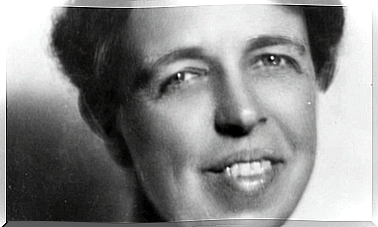Compassion Fatigue: The Burnout Of Healthcare Professionals

Sometimes healthcare professionals cannot improve the person they are treating, helping or caring for. This produces in them a form of post-traumatic stress: compassion fatigue. A state that is the result of constant energy wasting due to the therapeutic help they provide and the compassion they feel for their patients.
This wear and tear makes visible the emotional state in which health professionals can find themselves when observing the physical, psychological, social and spiritual suffering manifested by the people around them. Even with the passage of time they can indirectly experience their aches and pains.
Empathy as a trigger for stress
When a person goes to dialysis almost every day of the week, an emotional bond inevitably develops between the healthcare professional and the patient. They may not be able to maintain a personal relationship, but the simple fact of seeing each other on a daily basis and exchanging observations and hopes for improvement generates a friendly commitment.
In these cases, knowing how to put yourself in the place of the other is key. Understanding your needs and how you feel strengthens the bond you create. However, empathy can also play a trick when it triggers some types of stress. In fact, it is the trigger for the symptomatic picture of compassion fatigue.
Empathy increases the quality of treatment and intervention with patients. But, at the same time, it increases the vulnerability to professional burnout. The greater the empathy, the greater the risk of experiencing this effect.

Brain mechanisms of empathy
Compassion fatigue was a term coined in 1995 by Charles Figley, director of the Traumatology Institute at Tulane University (New Orleans). He observed that health professionals who worked in mental health with traumatized people indirectly experienced the effects of trauma on the patients they attended, over time.
Although the origin of this term is relatively recent, the brain mechanisms that explain it are imperishable and are related to empathy and imitation behaviors. Thus, the amygdala, the orbitofrontal cortex and mirror neurons are responsible for making someone feel what another person is feeling.
In addition, if these sensations hide deep pain and tremendous suffering, this empathic capacity is enhanced. And compassion fatigue becomes more apparent.
Signs that characterize compassion fatigue
Compassion fatigue is the result of a cumulative process. As we have seen, it develops due to a prolonged state of emotional distress due to continuous and intense contact with patients. But what are the signs and symptoms that can indicate compassion fatigue?
- Cognitive : memory difficulties, lack of attention and concentration, recurring negative thoughts or flashbacks.
- Emotional : intense feelings of fear, sadness and anger, general hopelessness, or loss of joy or happiness.
- Somatic : gastrointestinal discomfort, dizziness, headaches, hypertension, pain, muscle tension, chronic fatigue, difficulty falling asleep …
At the work level, some signs such as low motivation, feelings of misunderstanding, perception of little professional training or distancing from the team can also be identified.

Its relationship with post-traumatic stress
As we can see, compassion fatigue shares characteristic symptoms of Post Traumatic Stress Disorder. But before explaining them, let’s see what PTSD is all about.
This disorder is caused by a very stressful or traumatic event, which poses a threat or extreme physical harm to the subject. Thus, the body generates a response in the form of stress, the result of its effort to adapt to the environment. It can occur at any age and appear after the fact.
Meanwhile, compassion fatigue appears abrupt and acutely. In addition, in this specific case, it has multiple triggers that generate a stressful effect on the healthcare professional. They are the constant exposure, the emotional commitment and the therapeutic relationship that he maintains with his patients.
3 groups of shared symptoms
Compassion fatigue shares a number of symptoms of its psychopathological picture with PTSD.
- Reexperimentation : if the conflict is not resolved, the professional can relive or recall the traumatic experience in the form of rumination or flashbacks. In the case of healthcare professionals this is especially delicate. Stress is not generated by an overload of work, but by an emotional commitment to the patient you are helping.
- Avoidance and mental dullness: the person makes efforts to avoid thoughts, emotions, people, places, tasks or situations that remind him of the traumatic event. On the other hand, it tends to abolish relevant aspects of it and to reduce its interest and inclusion in activities that were previously rewarding. The person with compassion fatigue, like experiencing PTSD, suffers from discomfort, irritability, confusion and irritability. With this, he distances himself physically and emotionally from his patients and from other people, which can damage his inner circle.
- Hyperarousal or hyperarousal: arousal is the level of physiological activation. In the case of people with this disorder, their state of tension and alertness are permanent. That is, they are upset, irritable, excited, and manifest extreme reactivity to any event.

How to work compassion fatigue
Knowing what compassion fatigue is makes us aware of the possible consequences of poor emotional management in dealing with patients by healthcare professionals. Some suggestions to deal with this situation are:
- Have some time alone to see things in perspective and disconnect.
- Identify what strengths and ability you have to deal with the pain and suffering of others.
- Get adequate sleep and good nutrition.
- Perform relaxation exercises or physical activities on an irregular basis.
- Share opinions with co-workers.
As we can see, the secondary effects of a situation or circumstances of high emotional charge and suffering are tangible, even in professionals who know how to handle it. Taking care of ourselves is a priority that we cannot forget. In fact, it is the basis for offering quality treatment and care to others.









